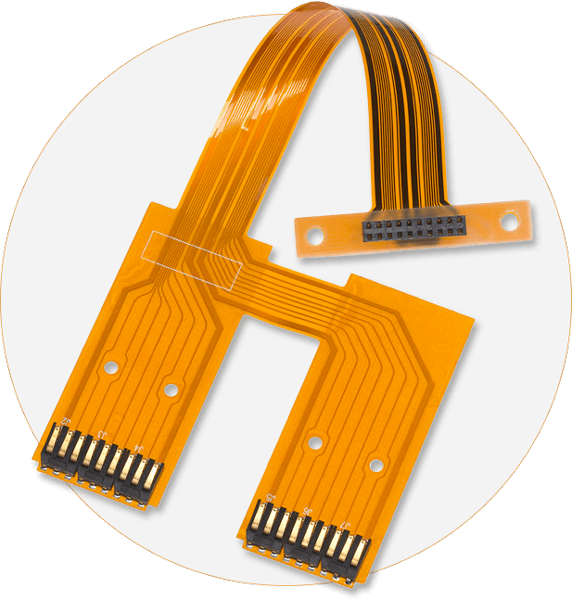Innovation is vital to keep up with the ever-changing world of electronic devices. As demands for smaller more flexible, and higher-performance electronic devices increase, manufacturers are constantly seeking innovative ways to improve production. One innovative technology that has gained significant attention is flex circuit manufacturing.
Flexible circuits, also known as flexible printed circuit boards (PCBs) have many advantages over rigid PCBs. They are made to bend, twist, and conform to various shapes, making them the perfect choice for applications that require intricate designs, limitations on space, or increased durability.

Flex circuits help manufacturers challenge the limits of design with a flexible foundation that adapts to the shape of the product. This allows for a design that is more compact and innovative design, which eventually leads to smaller and lighter products. Imagine a smartphone that curves easily around your wrist. A health tracker is discretely placed around your wrist. Or even a smart device that has a comfortable, smooth design. Flex circuits enable designers and engineers to turn these ideas into reality, opening up a new world of possibilities for the development of products.
Beyond their aesthetic benefits in terms of design, the durability of flex circuits sets them apart from their rigid counterparts. PCBs are prone to damage by the impact of shock, vibration, and repetitive bending. Flex circuits, however, have materials that are immune to these kinds of conditions and are therefore extremely durable. This quality is vital in industries like automotive and aerospace as well as medical, which require electronic components that can withstand harsh conditions.
The manufacturing methods employed in flex circuit production contribute significantly to their incredible capabilities. Flex circuits use a thin and flexible substrate material such as polyimide, polyester, or fiberglass, as opposed to rigid PCBs that are constructed using several layers. The substrate is the basis of the circuit and allows it to bend or bent while maintaining electrical connectivity. Utilizing advanced manufacturing processes that allow flex circuit makers to precisely etch circuit traces, incorporate complex interconnects, and incorporate components directly on the flexible substrate.
Surface mount technology, also known as SMT, allows for the integration of components on the flex circuits’ surface. This allows for greater capabilities and flexibility of the circuit. With SMT, manufacturers can mount electronic components directly onto the surface of the flex circuit, eliminating the necessity for bulky connectors, and minimizing the overall size of the gadget. This streamlined method not only saves space but also improves the integrity of signals, decreases weight, and boosts thermal management.
Moreover, flexible circuit manufacturing techniques permit efficient prototyping as well as the ability to scale production. The flexibility of circuit design allows rapid iterations to be made during prototyping and speeding up the process of developing products. Furthermore, flex circuits, which can be produced using automated manufacturing methods, are cost-effective options to produce large quantities of. Flexible circuits are an excellent option for companies that want to quickly bring innovative ideas onto the market.
The availability of reliable flex-circuit manufacturers is becoming more important as the demand for electronic devices that can be flexed grows. It is vital to partner with trusted, experienced companies in order to guarantee the precision, consistency as well as quality of flex-circuit production. They are able to offer guidance and insights on the design and production process. They can also give assistance in selecting the appropriate material.
In the end, flex circuits are vital components in achieving the most complex level in electronic assemblies of today. Flexible circuits play an essential part in the creation of intricate electronic systems. From consumer electronic equipment to the military, they can be used in numerous applications. They are able to move effortlessly through small areas, flexible substrates offer engineers the capability to design their designs with a variety of features while still fitting into tight assembly footprints. Flex assembly solutions are superior to other circuit routing techniques when it comes to accommodating size restrictions. Flex circuits are an appropriate choice when you need complex interconnections, combining multiple technologies in an efficient package.
